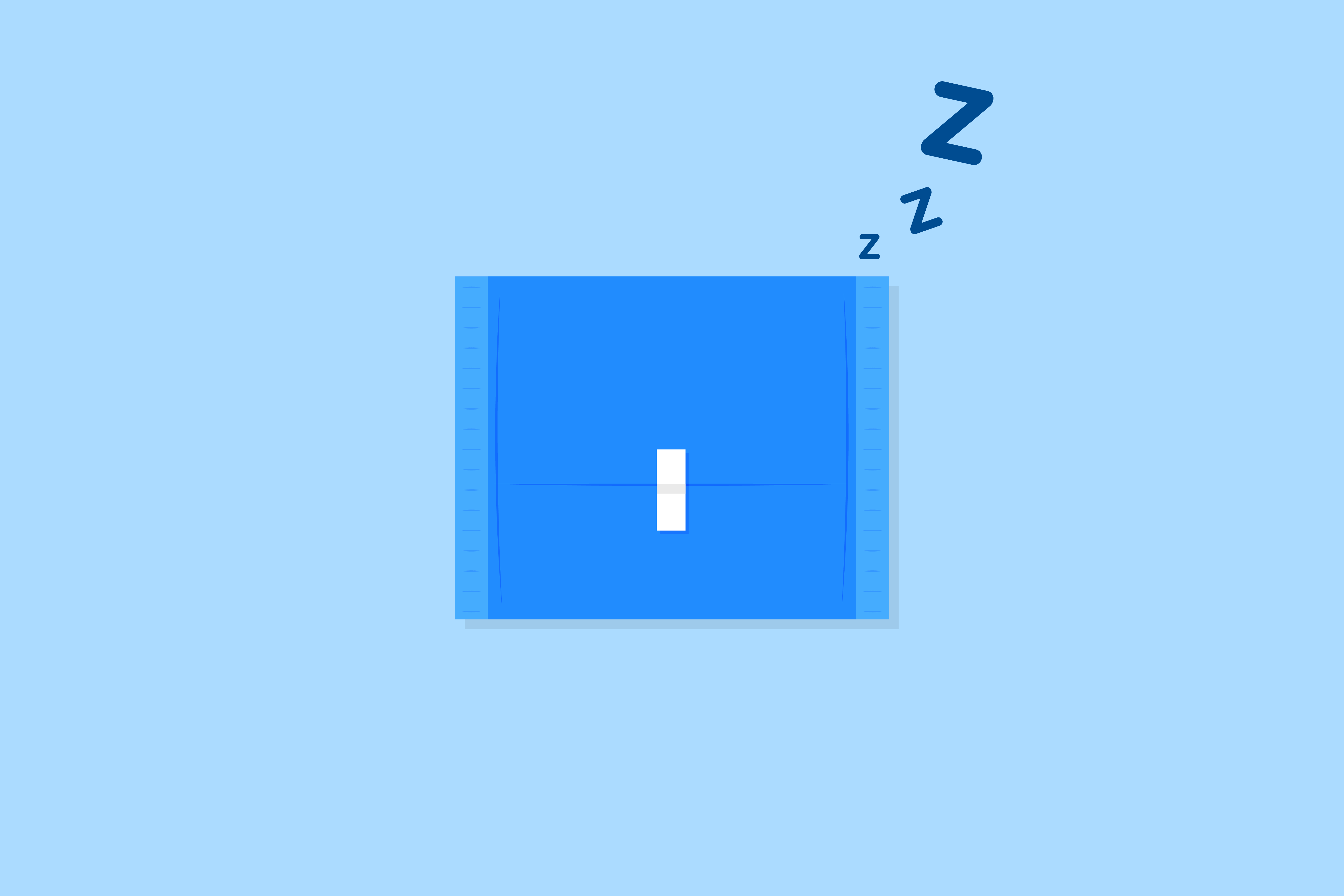Key Takeaways
- Box Breathing for Sleep Improvement: The box breathing technique, a form of deep and rhythmic breathing, offers relief from stress and reduces anxiety, making it a valuable tool for enhancing sleep quality. Its simplicity and effectiveness make it accessible to individuals seeking a bedtime routine for better sleep.
- Physiological Effects: Box breathing induces physiological changes in the body, such as improved respiratory function, lower blood pressure, and a reduction in carbon dioxide levels. The deliberate inhale, hold, exhale, and hold phases guide the body into a relaxed state, effectively diminishing overall stress levels.
- Incorporating Box Breathing into Daily Routine: Integrating box breathing into daily life is a simple yet potent strategy for promoting relaxation and overall well-being. Finding a serene space, following a step-by-step guide, and dedicating a few minutes to intentional breathing can contribute to cultivating mindfulness and improving mental and physical health.
Are you struggling to improve your sleep quality? Do you find it hard to unwind and relax before bedtime, leaving you feeling stressed and anxious?
If so, you may benefit from trying the box breathing technique. This simple breathing exercise has been shown to offer relief from stress and reduce anxiety, making it an effective bedtime routine for promoting better sleep.
In this article, we explore the concept of the box breathing technique, explain how it can be incorporated into your daily routine, and highlight the physiological and psychological benefits of this powerful tool. By adding box breathing to your bedtime routine, you can achieve a more relaxed state and improve your sleep quality.
So why not give it a try tonight and see the difference it can make?
Understanding the Box Breathing Technique
The box breathing technique is a form of deep breathing that involves taking slow, rhythmic breaths to help calm the mind and body. To perform the box breathing technique, begin by finding a comfortable position and taking a few deep breaths.
Next, inhale deeply through your nose for a slow count of four, hold your breath for another slow count of four, slowly exhale through your mouth for four counts, and hold at the end of the exhale for another four counts. This completes one cycle of the box breathing technique.
There are variations of this technique, including four square breathing and square breathing, which involve altering the length of the inhale, hold, exhale, and hold phases, but the basic box breathing technique remains the same. Practicing box breathing can help improve respiratory function, reduce stress, and promote relaxation.
Deep breathing techniques like the box breathing technique have long been utilized in breathwork practices. Incorporating deep breathing techniques into your daily routine can promote a greater sense of well-being and help manage feelings of anxiety or stress.
The box breathing technique specifically has gained popularity in recent years among professionals such as Navy SEALs and police officers as a form of combat tactical breathing. Verified Source National Library of Medicine (NIH) World’s largest medical library, making biomedical data and information more accessible. View source Research indicates Verified Source National Library of Medicine (NIH) World’s largest medical library, making biomedical data and information more accessible. View source that box breathing can enhance performance and reduce stress levels.
“Box breathing, a structured breathwork technique, has garnered attention for its potential to enhance sleep quality,” says Dr. Jordan Burns. “Research, including studies in Verified Source National Library of Medicine (NIH) World’s largest medical library, making biomedical data and information more accessible. View source ‘Psychology, Health & Medicine,’ suggests that incorporating box breathing into a pre-sleep routine can induce a relaxation response, calming the nervous system.”
The Physiological Effects of Box Breathing
The box breathing technique has various physiological effects on the body. Practicing breathing exercises, like deep breaths, can help improve stress management and reduce physiological arousal.
It has been observed that holding your breath Verified Source National Library of Medicine (NIH) World’s largest medical library, making biomedical data and information more accessible. View source during the technique Verified Source ScienceDirect One of the largest hubs for research studies and has published over 12 million different trusted resources. View source can lower blood pressure, with the regular breathing during the exercise bringing the body’s rhythm back to normal.
Additionally, taking a deep inhale and slowly exhaling can help reduce Verified Source Harvard Health Blog run by Harvard Medical School offering in-depth guides to better health and articles on medical breakthroughs. View source carbon dioxide levels in the body, which can positively impact mental health.
Physiological arousal, Verified Source ScienceDirect One of the largest hubs for research studies and has published over 12 million different trusted resources. View source the body’s response to stress, Verified Source National Library of Medicine (NIH) World’s largest medical library, making biomedical data and information more accessible. View source finds relief through box breathing. The deliberate deep inhale and slow exhale of this technique guide the body into a more relaxed state, effectively diminishing overall stress levels.Consistent practice of box breathing demonstrates a positive influence on mental health, and better mental health can improve sleep.
“Scientific literature, such as publications from Verified Source ScienceDirect One of the largest hubs for research studies and has published over 12 million different trusted resources. View source ‘The Journal of Psychophysiology,’ illuminates the physiological benefits Verified Source Wiley Multinational publishing company specializing in academic and instructional materials. View source of box breathing on sleep,” says Dr. Burns. “By promoting a balance between the sympathetic and parasympathetic nervous systems, this breathing technique creates an environment conducive to restful sleep.”
Integrating this simple yet impactful breathing technique into daily routines, with its emphasis on slow breathing, deep breaths, and deliberate inhales, contributes to promoting overall well-being. It becomes a tactical tool for cultivating a sense of calm and balance in the face of life’s stresses, particularly when paired with other stress-relief measures such as journaling before bed.
The Science Behind Box Breathing
Box breathing is not just a simple technique, but a powerful tool that can help regulate the nervous system and promote relaxation. It works by shifting the body out of the fight or flight mode and activating the relaxation response instead, reducing stress and anxiety.
Research has shown that measured breathing can improve heart rate variability, a key indicator of cardiovascular health and stress resilience, along with blood pressure and mood. Verified Source National Library of Medicine (NIH) World’s largest medical library, making biomedical data and information more accessible. View source It involves taking deep, slow breaths and holding the breath for a brief period before slowly exhaling, which helps increase oxygen levels in the body and promote calmness.
Other relaxation techniques Verified Source National Library of Medicine (NIH) World’s largest medical library, making biomedical data and information more accessible. View source such as progressive muscle relaxation Verified Source Harvard Health Blog run by Harvard Medical School offering in-depth guides to better health and articles on medical breakthroughs. View source and visualization also share similarities with box breathing and can be integrated for even greater improvement.
While box breathing has been used by professionals such as Navy SEALs and police officers for stress reduction and performance enhancement, more research is still needed to fully understand its effects. However, for those looking to reduce stress and anxiety and improve overall well-being, incorporating box breathing into a daily routine can be a simple yet powerful technique.
Adding Box Breathing to Your Daily Routine
Integrating box breathing into your daily routine is a simple yet potent strategy for enhancing relaxation and overall well-being. Begin by locating a serene and comfortable space where you can sit down and deliberately focus on your breath. such as sitting up in bed or in a comfortable chair
Inhale slowly, allowing the deliberate normal rhythm to guide your breathwork practice. Hold for a count, slowly exhale, and hold again for the same count. The technique is simple yet powerful, with more research being conducted to explore its physiological effects on the body.
Incorporating box breathing into a daily routine can provide significant relief from stress, and improve mental and physical well-being for better sleep. This mindful approach transforms box breathing into a valuable tool for cultivating a sense of calm and balance in your everyday life. Therefore, it is worth considering adding this technique to your daily routine for a better quality of life.
“The American Academy of Sleep Medicine underscores Verified Source American Academy of Sleep Medicine Society focused on sleep medicine and disorders, and the AASM is who authorizes U.S. sleep medicine facilities. View source the importance of establishing a calming pre-sleep ritual, and box breathing can be a valuable component,” says Dr. Burns. “Creating a calm environment and structured breathwork can be potent for individuals seeking a natural and effective approach to better sleep.”
Step-by-Step Guide
1. Sit comfortably in a chair with your feet flat on the ground and your hands resting on your lap.
2. Take a few deep breaths to relax your body and mind.
3. Begin by inhaling through your nose for a slow count of four.
4. Hold your breath for a slow count of four.
5. Exhale through your mouth for a slow count of four.
6. Hold your breath for a slow count of four.
7. Repeat steps 3-6 for a few minutes, focusing on the sensation of your breath and the present moment.
Benefits
Box breathing is a valuable technique for achieving a “rest-and-digest” state, a key factor in reducing stress and promoting relaxation. This practice also aids in cultivating mindfulness in the present moment, leading to significant positive effects on the body over time.
Especially beneficial for healthy adults Verified Source National Library of Medicine (NIH) World’s largest medical library, making biomedical data and information more accessible. View source seeking to integrate more relaxation techniques into their daily routine, box breathing addresses negative affect Verified Source National Library of Medicine (NIH) World’s largest medical library, making biomedical data and information more accessible. View source (or negative emotions Verified Source National Library of Medicine (NIH) World’s largest medical library, making biomedical data and information more accessible. View source ) by providing a deliberate and calming approach.
The emphasis on a slow count of the breath, combined with a focus on the present moment, makes it a powerful tool for managing stress and anxiety, contributing to peaceful thoughts and easier problem-solving. The incorporation of tactical breathing Verified Source Harvard Health Blog run by Harvard Medical School offering in-depth guides to better health and articles on medical breakthroughs. View source within this technique adds an extra layer of effectiveness in promoting a sense of calm and overall well-being.
Controlled breathing techniques, such as box breathing, also positively impact heart rate variability. A healthy heart rate variability is crucial as it reflects the adaptability of the autonomic nervous system, promoting cardiovascular resilience and indicating a well-regulated response to stress, contributing to overall heart health and well-being.
Overall, box breathing is a simple technique with incredible physiological effects on the body. By incorporating this practice into your daily routine, you can promote relaxation, cultivate mindfulness, and improve your overall well-being.
“As a chiropractor focusing on holistic well-being, I often recommend box breathing to my patients,” says Dr. Burns. “Beyond the research-backed benefits, the simplicity of this technique makes it accessible to anyone. I encourage individuals to explore box breathing to manage stress and promote relaxation, especially during the evening hours when preparing for a restorative night’s sleep.”
FAQs
What are the benefits of deep breathing exercises?
Deep breathing can significantly enhance sleep quality. The relaxation induced by deep breathing before bedtime creates an optimal state for falling asleep and enjoying a more restful night. Physiologically, the benefits extend to lower blood pressure, making deep breathing a positive practice for cardiovascular health. It also encourages optimal respiratory function by engaging the diaphragm and promoting full lung capacity.
Beyond the physical realm, deep breathing serves as a valuable tool for emotional regulation, aiding individuals in navigating and managing their emotional responses, especially during moments of heightened stress or frustration.
Can I do deep breathing all the time?
Yes, deep breathing can be practiced regularly throughout the day. Deep breathing exercises during the day can promote a continuous sense of calm and stress reduction. However, it’s essential to find a balance and not engage in deep breathing exercises in situations where heightened alertness is necessary, such as when driving or operating machinery.
Why do I feel sleepy after deep breathing?
Deep breathing activates the body’s parasympathetic nervous system, often referred to as the “rest and digest” system. This response leads to a decrease in stress hormones, such as cortisol, while promoting the release of relaxation-inducing neurotransmitters like serotonin. This combination can result in an increase in feelings of calmness and drowsiness, making you feel sleepy.
How does breathwork improve sleep?
Breathwork, such as deep breathing exercises, can improve sleep by promoting relaxation and reducing stress and anxiety. Focused and intentional breathing activates the body’s relaxation response, calming the nervous system and making it easier to transition into a restful state. Paired with other relaxation techniques like progressive muscle relaxation, deep breathing can help you fall asleep fast.
What are the disadvantages of deep breathing?
While deep breathing is generally safe, some individuals may experience dizziness or lightheadedness, especially if they hyperventilate. It’s crucial to practice deep breathing exercises in a comfortable and safe environment. If you have respiratory or cardiovascular conditions, consult with a healthcare professional before starting a deep breathing routine.
What is the best breathing technique to fall asleep?
The 4-7-8 breathing technique is a popular method to help fall asleep. Inhale quietly through your nose for a count of four, hold your breath for a count of seven, and exhale audibly through your mouth for a count of eight. This rhythmic breathing pattern can induce a sense of calm conducive to sleep.
However, other breathing techniques like box breathing can also help you fall asleep fast. You can experiment with different ones that can help you relax quickly and effectively.
Conclusion
Overall, the box breathing technique is a simple and effective tool that can help improve sleep quality and reduce stress. Verified Source Medline Plus Online resource offered by the National Library of Medicine and part of the National Institutes of Health. View source By incorporating this practice into your daily routine, you can achieve a state of relaxation and mindfulness that promotes physical and mental well-being.
The technique is easy to learn and can be done from the comfort of your own home or office. Whether you are a Navy SEAL or a busy professional, this breathing exercise is accessible and beneficial for all. When done before bed to reduce stress and anxiety, it can even help you fall asleep faster.
So why not give it a try? Experiment with different variations, such as square breathing, of the technique and find a comfortable position that works for you. Or try a different technique entirely, such as the 4-7-8 breathing technique. Verified Source National Library of Medicine (NIH) World’s largest medical library, making biomedical data and information more accessible. View source With regular practice, you may experience greater improvement in your sleep quality, stress levels, and overall health.
About the author
Mitchell Tollsen is a graduate student and a freelance writer who’s contributed to the Early Bird blog for three years. Mitchell’s always been fascinated by the science of sleep and the restorative processes our bodies undergo when at rest. The self-titled “Sleep Expert” is always looking for ways to improve his shut-eye, and throughout the years has implemented numerous lifestyle changes and tried dozens of sleep-promoting gadgets to determine the best ways to truly get better rest.
View all posts





